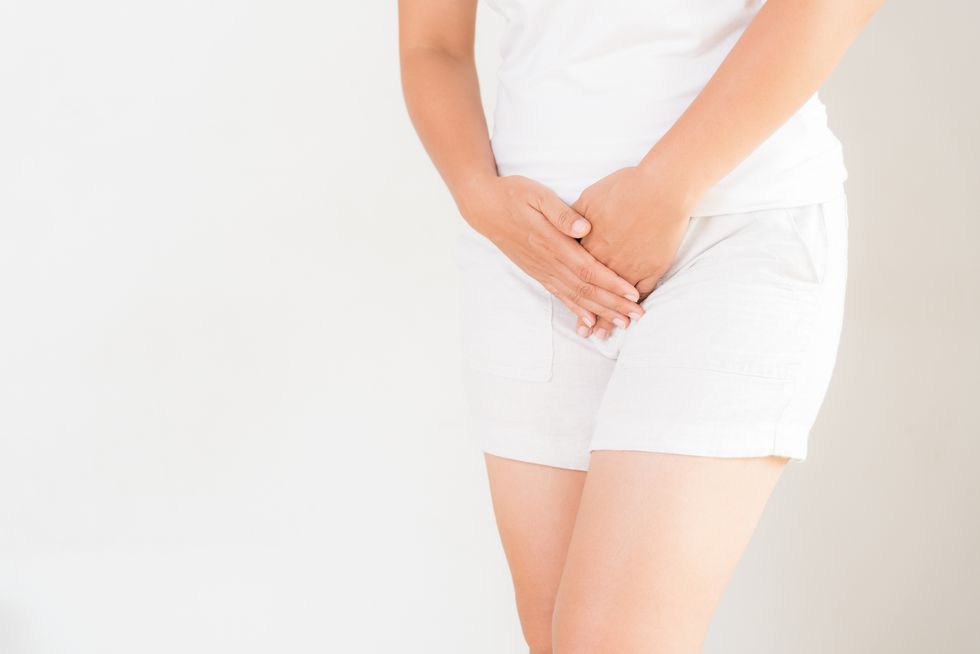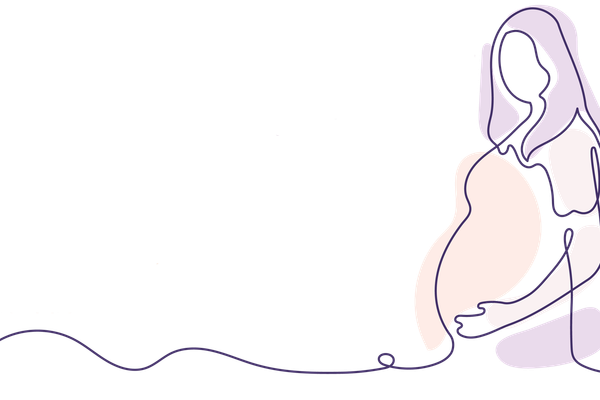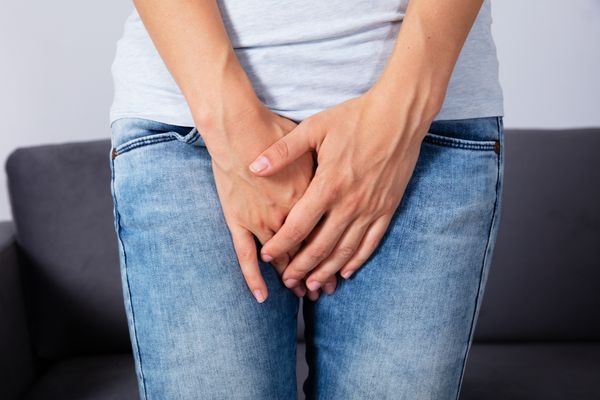I'm hearing (and saying) it all the time: I can't drink anything after lunch or I'm up all night peeing. I can't cough or laugh without leaking. I never know when I'm going to have to go—and sometimes it's too late. I'm sure you have your own stories to share.
And it's no wonder: Urinary incontinence (UI)—the loss of bladder control—is estimated to affect more than 13 million adults. Although it's common, it's embarrassing. It ranges from the occasional leakage of urine to the sudden, strong and overwhelming need to urinate (so strong that you might not make it to the bathroom in time).
Learn more about How to Not Let Light Bladder Leakage Hold You Back.
If you're wondering why so many more women than men suffer with this condition—in fact, twice as many—it's because it does lean toward being gender-specific, linked to certain things like pregnancy, childbirth, menopause and simply the way our urinary tract is structured.
To Blame: The Pelvic Floor Muscles
They're the group of muscles that wrap around the vagina, bladder and rectum and play a role in supporting them. These muscles help control the bladder and bowel and are the muscles that contract during an orgasm.
Like many conditions, UI worsens with age. That's because the pelvic floor muscles, specifically the bladder muscles in this case, naturally weaken and may decrease the bladder's ability to store urine. Another reason? Menopause and a natural decline in estrogen, which keeps the lining of the bladder and urethra healthy.
If you suffer from UI, you'll usually know it. Here are the symptoms for the various types:
- Stress incontinence. That's when urine leaks when you do things like cough, sneeze, laugh, exercise or lift something heavy.
- Urge incontinence. This is when you experience a sudden urge to urinate, which is followed by an (involuntary) release of urine. It's likely you also need to urinate frequently and make multiple trips to the bathroom during the night.
- Overflow incontinence. Your bladder frequently "dribbles" from not emptying completely.
- Mixed incontinence. You may have more than one of the above.
Prevention
Certain foods, drinks, medications and lifestyle triggers may worsen the condition:
Caffeine
Chocolate
Chili peppers
Artificial sweeteners
Large doses of vitamin C
Citrus fruits
Carbonated beverages
Spicy, sugary or acidic foods
Corn syrup
Certain heart and blood pressure medications, sedatives and muscle relaxers
Smoking
Family history
Being overweight
Neurological causes like multiple sclerosis and certain spinal cord injuries
Self-care for Your Bladder
Kegel exercises (or pelvic floor exercises). You probably know about Kegel exercises and might already be doing them. But there are very specific ways to do these and locate the right muscles. Have a look here. The good thing about Kegels is that you can do them anywhere, anytime. But be careful not to practice them at the same time you're urinating—at least no more than twice a month. The experts say that's because doing this can backfire and weaken your pelvic floor muscles or damage your bladder and kidneys.
Some people use pelvic floor vaginal weights to help strengthen their muscles. These are small, cone-shaped weights that are inserted into the vagina and come in increasingly larger and heavier sizes. The wearer then contracts her muscles to stop the weights from slipping out. Once she can hold the weight for 15 minutes, she "graduates" to the next size. But studies have shown that these are no more effective than Kegels, and many women find them unpleasant or difficult to use.
Bladder training. Ignore the urge to go—if you can. Start with waiting 10 minutes each time the urge strikes. The goal is to lengthen the time between trips to the bathroom until you're going every 2.5 to 3.5 hours, says the Mayo Clinic. Another way to train your bladder is to schedule your trips to the toilet for every two to four hours, rather than waiting for the need to go, they say.
Void twice. "Double voiding" helps to prevent overflow incontinence. After you're done urinating, wait a few minutes, then try again.
Limit your fluids and certain foods. See list above.
If you're overweight, lose weight. Obesity heightens your risk of developing UI, because it puts stress and pressure on the pelvic floor muscles.
- Urinary Tract Conditions - HealthyWomen ›
- Stress Urinary Incontinence: It Can Be Treated - HealthyWomen ›
- Urinary incontinence ›
- What You Need to Know About Stress Urinary Incontinence - HealthyWomen ›
- Treating Stress Urinary Incontinence - HealthyWomen ›
- How to Not Let Light Bladder Leakage Hold You Back - HealthyWomen ›
- What You Need to Know About Urinary Incontinence - HealthyWomen ›
- How to Strengthen Your Pelvic Floor Without Kegels - HealthyWomen ›
- FAQs About Bladder Leakage - HealthyWomen ›
- After Living with Postpartum Bladder Leakage, I Was Able to Treat It - HealthyWomen ›
- Urinary Incontinence Can Feel Like a Full-Time Job - HealthyWomen ›
- Did You Know There Are Different Types of Bladder Leakage? - HealthyWomen ›
- Urinary Incontinence During Pregnancy and After Pregnancy - HealthyWomen ›
- Incontinencia urinaria durante y después del embarazo - HealthyWomen ›
- ¿Sabías que hay varios tipos de filtraciones de la vejiga? - HealthyWomen ›






